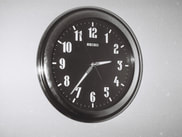 Some investigations into incidents, criminal or surveillance activity can be difficult to convey to your client in a written report. Establishing a clear timeline in chronological order can greatly assist in sharing information with your client they can understand. Here are a few timeline format ideas to help in your next investigation:
Slip & Fall Jones Retail Store
Employee Altercation
The parallel timeline clearly demonstrates the two actions as they occur. From the timeline it is easy to see the security officer responded as quickly as possible, as well as, the manager notified the security officer in a timely manner.
Timelines are a great tool to clearly demonstrate, document the results of the facts gathered, making it easy for others to understand what and when something occurred. As a private investigator gathering facts it is important to provide them to the client in a format they can understand, almost visualize what occurred.
0 Comments
There's nothing more rewarding than conducting an interview of a suspect and getting a confession, or completing an eye witness interview that clearly identifies the suspect. But wait, your work is not done.
Even when an interview is completed, the information you are searching for has been obtained, you must verify the information to ensure it is factual, then document it in the report for your client. Why is it important to verify the facts when you get a confession or eye witness accounts? Because the suspect may change their story, or if court is in the future, they simply plea the fifth amendment and do not testify. Witnesses disappear, they move away or over time their memory recall becomes fuzzy. Also, a defense attorney may seek to poke holes in the information you gained through interviews by pointing out you did not verify information leaving doubt in the mind of the judge or jury. Following is a simple checklist to verify information from a confession or eye witness statements:
Verifying each piece of information provided by suspects and witnesses will ensure that your case is complete and accurate. Any discrepancies should be investigated further until there is no doubt. This will help maintain the integrity of your case in the event memories of witnesses fade, or the suspect refuses to talk anymore. As a private investigator have you ever found yourself working day and night with little time for a break? Over time, you find you don't have time to accomplish all the tasks you need for working your cases efficiently. We are going to provide some helpful tips to help you manage your time. Before you continue reading understand that not all of these tips are possible everyday, but if you strive to include as many as possible, when possible, you will be able to gain some more control over the most valuable resource you have...time. So, whenever possible try;
Time management is critical to a private investigator. Properly done, you will be more productive, efficient, and the quality of your work will improve. Take time, to make time work for you! |
Pro PI staffExperienced professionals and trainers. Articles
December 2019
Categories |

 RSS Feed
RSS Feed
